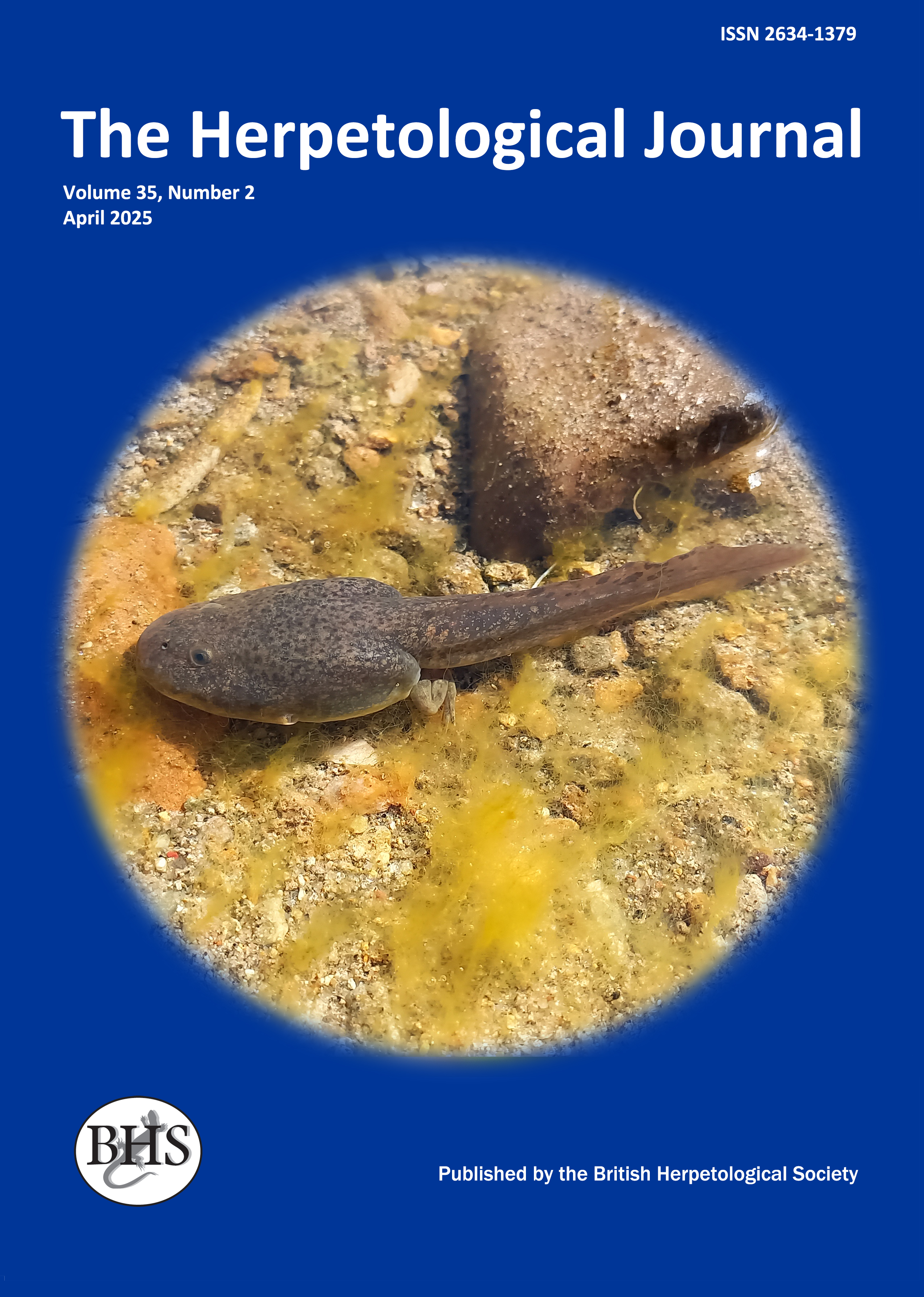
The Herpetological Journal
The Herpetological Journal is the Society's prestigious quarterly scientific journal. Articles are listed in Biological Abstracts, Current Awareness in Biological Sciences,Current Contents, Science Citation Index, and Zoological Record.
ISSN 0268-0130
2021 Impact Factor from Clarivate for the Herpetological Journal is 1.194, an increase of 0.332 from 2020.
pdf 01. Population estimate and conservation of the melanistic Iguana iguana population on Saba, Caribbean Netherlands
1 download
Subscription / purchase required
pp. 176-186
Authors: Matthijs P. van den Burg, Hannah Madden & Adolphe O. Debrot
Abstract: Conservation management of natural populations is ideally based on the most accurate data of critical variables including demography, natural history and population size. Although Caribbean iguanids are highly threatened by a range of anthropogenic threats, the native melanistic Iguana iguana populations in the Lesser Antilles have received surprisingly little research attention. Here we assessed population size, distribution and degree of melanism for the melanistic iguanas of Saba, Caribbean Netherlands based on one month of fieldwork. Distance sampling (based on 117 separate surveys along 38 unique transects, totalling 48 survey hrs) estimated the island population size at 8233 ± 2205 (SD) iguanas. Female maximum snout-vent length (39.0 cm) of 56 captured iguanas was less than that of males (43.9 cm). Iguanas mainly occurred on the southern and eastern sides of the island, at mid-altitudes between 180 and 390 m (max 530 m), with highest densities being in residential and certain natural areas. Historically, iguanas have been reported from higher altitudes, where their presence was likely facilitated by former extensive forest clearing for agricultural reasons. Contrary to earlier statements claiming that 20% of adult males were fully melanistic, we found that only 1% of adult iguanas exhibited > 90% melanism, whereas 81% of males were less than 50% melanistic on the body. No relationship was found between the degree of melanism and elevation, which has been suggested by others. Probably, one main threat to the Saba green iguana population is the documented crossbreeding with non-native green iguanas. Beyond non-native iguanas, the long-term stability of the native population appears under pressure given the limited nesting sites and extremely low presence of juvenile and hatchling iguanas (2.4%). In particular, the island’s feral cat and large goat population likely impact nest-site quality, nest success and hatchling survival.
Keywords: ecology, Iguanidae, Lesser Antilles, management, population assessment

